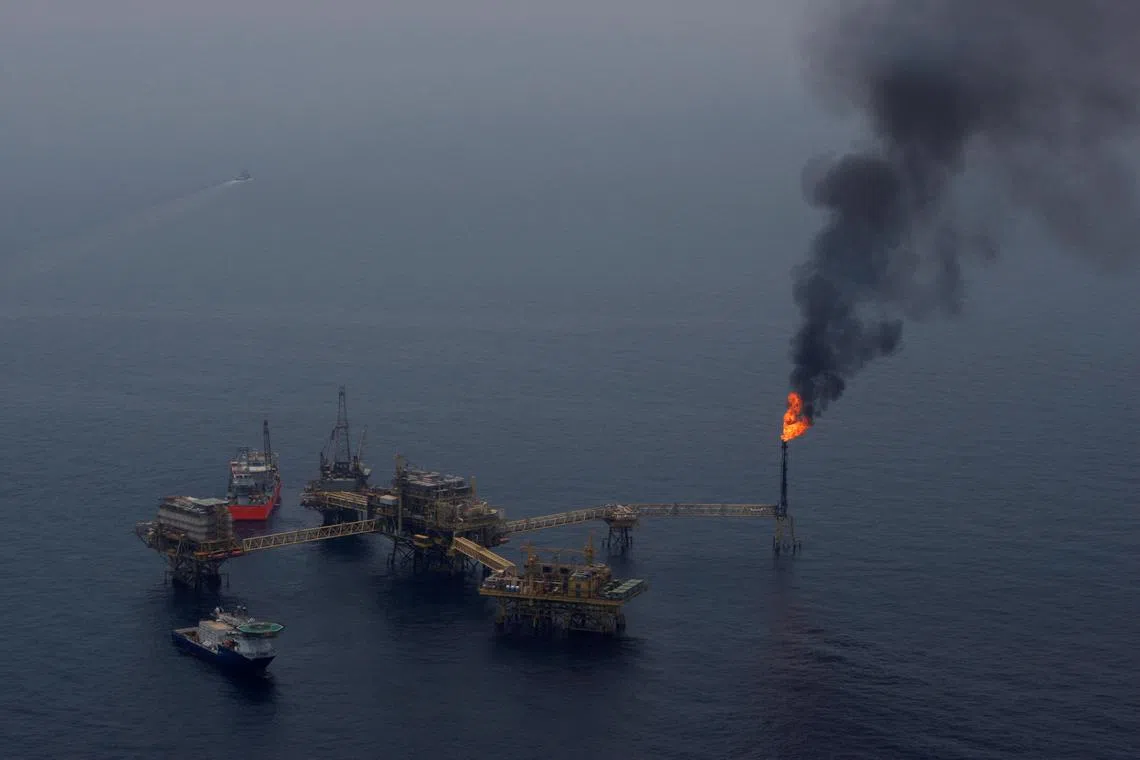UN targets real-time tracking of greenhouse gases
Sign up now: Get ST's newsletters delivered to your inbox

The oil and gas sector is a major source of greenhouse gas emissions.
PHOTO: REUTERS
Follow topic:
GENEVA - The United Nations announced on Monday it had taken a step towards filling a key gap in the fight against climate change, with plans for standardised, real-time tracking of global greenhouse gases.
The UN’s World Meteorological Organisation (WMO) has come up with a new Global Greenhouse Gas Monitoring Infrastructure that aims to provide better ways of measuring planet-warming pollution in order to help inform policy choices.
WMO’s new platform will integrate space-based and surface-based observing systems, and seek to clarify uncertainties about where greenhouse gas emissions end up.
It should result in far faster and sharper data than ever before on how the planet’s atmosphere is changing.
“The goal is to have a fully operational capability in five years,” said Dr Lars Peter Riishojgaard, deputy director of WMO’s infrastructure department.
The system “will be able to show you on a map: This is where it (greenhouse gas) came in, this is where it came out. So you can see, grid cell by grid cell on a global scale, where that actually happened”.
“We can do this in near real time,” he told a press conference.
Uncertainty over natural processes
In 2015, nearly 200 nations backed the Paris Agreement on climate change,
WMO said there needed to be stronger scientific underpinnings of climate change mitigation actions taken under the agreement.
“There are still uncertainties, especially regarding the role in the carbon cycle of the ocean, the land biosphere and the permafrost areas,” said WMO chief Petteri Taalas.
“This will provide vital information and support for implementation of the Paris Agreement.”
Dr Riishojgaard cited two problems surrounding the Paris accord.
First, natural processes “pump in and take out much more greenhouses gas than we humans do”, and not enough is known about how that functions.
Second, monitoring of how much emissions are reabsorbed though human activity such as reforestation “is on very shaky ground”.
He said most accounting is done by totting up known emissions, but the data for this was patchy in developing countries, while natural emissions were not properly accounted for.
Grid cell system
Dr Riishojgaard said the new system needed to look at atmospheric greenhouse gases overall, then try to work out where they were coming from and ending up.
This can be done initially on a 100 sq km grid cell, using the same model and technology as for weather prediction.
It could be done on a 1 sq km grid, but that would currently be prohibitively expensive, he said.
However, it might be possible within a decade.
The three major greenhouses gases are carbon dioxide, methane and nitrous oxide. Of those, carbon dioxide accounts for around 66 per cent of the warming effect on the climate.
Professor Taalas said: “Greenhouse gas concentrations in the atmosphere are at record high.”
WMO held a symposium in late January that brought together experts from a wide range of fields to start fitting the jigsaw pieces together on building a new monitoring system.
The organisation’s executive council – comprising more than 30 countries, including the United States, China, Russia and India – endorsed the project at its meeting last week.
Further approval will be needed from the congress of 193 member states – the WMO’s top decision-making body – in May. AFP

